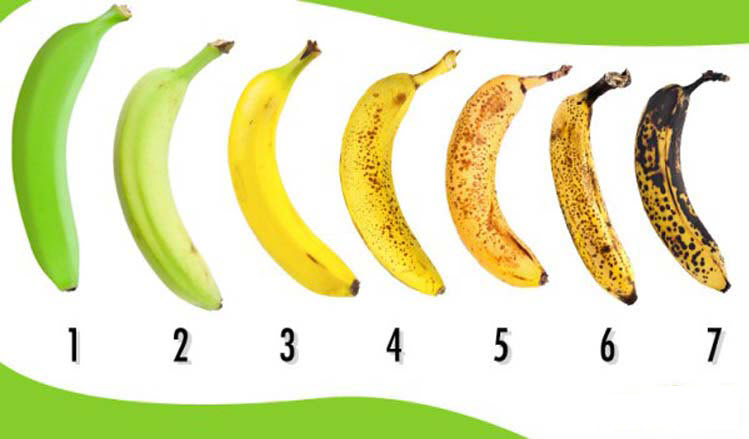We have many different types of fruits to choose from but they banana almost seems to be universal in its appeal. Many people love to eat bananas and they do so at any time of the day. After all, they are so easy to simply pick up off of the counter, peel and enjoy. That being said, there is also an interesting question that often comes up.
One of the more interesting things about bananas is the fact that they have a relatively short lifespan. They go from green to yellow to brown fairly quickly. Each of us has our own particular time when we feel that it is right to eat a banana, and there is going to be a difference in both the taste and texture. What you might be surprised to learn, however, is that there are some specific reasons why you may consider the exact timing of your consumption of a banana.

Ripe bananas (Fruits 4-7)
There’s something special about the banana number 7 in this image. According to some nutritionists, they feel that when a banana has more dark spots, it has more anti-cancerous properties.
That is because of an increase of TNF which is indicated by the number of brown spots on the banana.
In addition, a ripe banana contains high concentrations of fiber, vitamin C, vitamin D, potassium and antioxidants. If you wait until a banana is ripe to eat it, you can enjoy those benefits.
Ripe bananas are also good for the digestive system.
There are times, however, when you may not want to eat a ripe banana. Here’s what happens when you eat bananas while they are still green.
Unripe bananas (Fruits 1-3)
Unripe bananas also have other benefits, including a reduced sugar content and more probiotic bacteria that can help to keep your colon in good condition. The downside of eating unripe bananas, however, is that they could cause bloating and are hard on the digestion.
Eating unripe bananas may be a better choice for those with type II diabetes because of their low sugar content. The higher starch content, by the way, can help you to feel full faster.
Be sure to share this with your friends on Facebook
